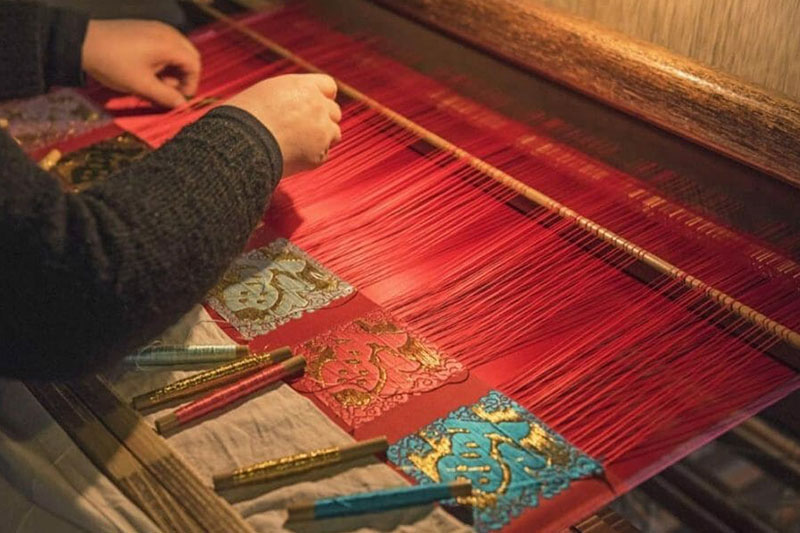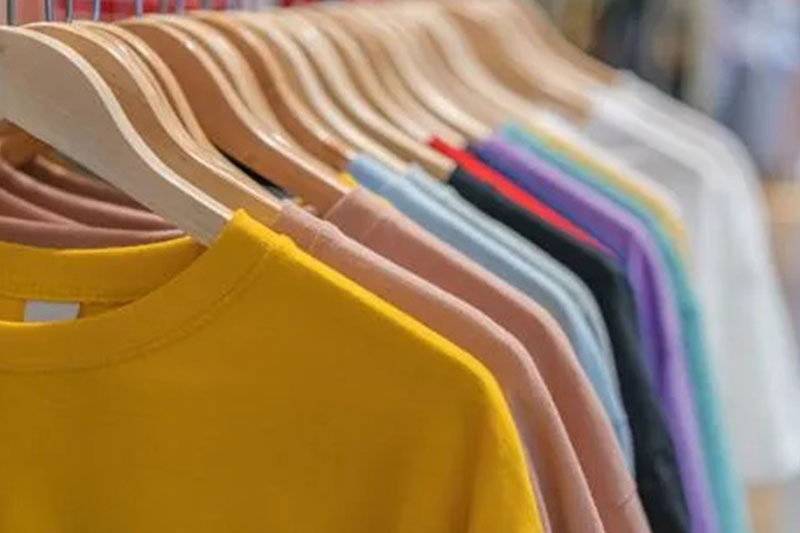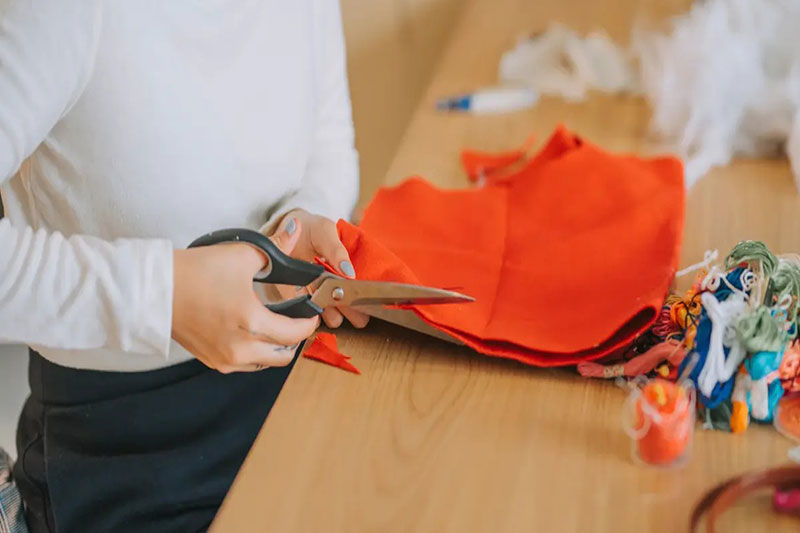How to Identify Authentic Indian Handloom Products?

Indian handloom products are a timeless testament to the country’s rich cultural heritage and craftsmanship. From luxurious Banarasi silks to timeless Khadi cotton, handloom fabrics have a unique charm and quality that sets them apart. However, in today’s fast-paced world, machine-made replicas often flood the market, making it difficult for consumers to identify authentic handloom products.
If you value originality and want to support artisans, here’s a guide to help you spot genuine Indian handloom fabrics.
1. Understand What Handloom Means
Handloom refers to the traditional weaving process where fabric is woven manually on a loom without using electricity. Each handloom product tells a story through its intricate designs, vibrant colors, and regional techniques passed down through generations.
Unlike machine-made textiles, handloom fabrics are eco-friendly, use less water, and provide livelihoods to millions of weavers in India.
2. Look for the “Handloom Mark”
One of the easiest ways to ensure authenticity is by checking for the Handloom Mark, an initiative by the Government of India. It certifies that the product is genuinely handwoven and meets the required standards.
- The Handloom Mark is usually attached as a label or tag on the product.
- It features a stylized hand holding yarn with the words “Handloom Mark.”
This certification is a reliable sign of authenticity and ensures you’re purchasing from certified sellers or cooperatives.
3. Feel the Fabric
Handloom products often have a unique texture and feel compared to power loom or machine-made fabrics. Here’s what to look for:
- Irregularities: You may notice slight variations in weave, minor thread pulls, or uneven patterns. These imperfections are a hallmark of handmade work and add to its beauty.
- Softness & Breathability: Handwoven fabrics, especially cotton and silk, feel softer and breathe better than synthetic alternatives.
- Heaviness: Authentic handloom fabrics, especially silks like Banarasi or Kanjivaram, tend to be heavier because of the high thread count and pure materials.
4. Examine the Weave Closely
Handloom textiles display distinctive weaving styles specific to their region. For example:
- Banarasi Silk: Look for intricate Mughal-inspired designs, often featuring gold or silver zari work.
- Chanderi: Known for its lightweight, sheer texture with fine motifs.
- Ikat: Notice the characteristic blurred or feathered edges in the patterns due to the tie-dye weaving technique.
- Pochampally: Features geometric patterns in bright, contrasting colors.
Handloom weaves often have minor asymmetries when you closely examine both sides of the fabric. Machine-made textiles typically have perfect symmetry and uniformity.
5. Check the Reverse Side of the Fabric
The reverse side of handwoven products often reveals as much as the front. In authentic handloom:
- You can see loose threads, knots, and uneven stitching, particularly in complex designs like jacquard weaves.
- Unlike power loom fabrics with clear designs on both sides, designs and motifs may not be as sharp or clear on the back as on the front.
This unevenness is a mark of manual craftsmanship, not a flaw.
6. Conduct the Burn Test (With Caution!)
If you have a small thread or swatch from the fabric, you can perform a burn test to check its authenticity:
- Natural fibers (like cotton or silk used in handloom) will burn slowly, smell like burnt hair (for silk) or paper (for cotton), and leave behind soft ash.
- Synthetic fibers will melt, produce black smoke, and leave a hard plastic residue.
Use this method responsibly and only when you have excess material or swatches the seller provides.
7. Verify the Source or Seller
- Purchase from reputed handloom cooperatives, government emporiums, or certified sellers known for dealing in handloom products.
- Brands registered under India Handloom Brand (IHB) or sellers with Geographical Indication (GI) tags are more likely to provide authentic products.
- Online platforms that showcase artisan-made or fair-trade handlooms often list the origin and maker details for transparency.
8. Understand the Price Point
Authentic handloom products are often more expensive than machine-made alternatives because of:
- The time-intensive labor involved
- The use of pure, natural fibers
- The craftsmanship of skilled weavers
If you come across a pure Banarasi silk saree or authentic Kanjivaram being sold at unusually low prices, it’s likely to be a power loom imitation or blended fabric.
9. Ask Questions & Know the Story
A good seller will be happy to explain:
- The origin of the weave
- Type of yarn used (cotton, silk, wool, or blends)
- Weaving technique
- Time taken to weave a piece
Authentic handloom items often have stories—whether it’s the community behind the weave, the inspiration for the design, or the tradition it represents. Being informed not only helps you make the right purchase but also deepens your appreciation for Indian textile heritage.
Conclusion
Identifying authentic Indian handloom products is as much about awareness as it is about observation. By paying attention to details like texture, weave, imperfections, price, and certification marks, you can make informed choices that support traditional artisans and preserve India’s rich handloom legacy.
Next time you shop, remember: buying authentic handloom isn’t just a purchase—it’s a contribution to keeping centuries-old art alive.
Explore the world of textiles and innovations in garment manufacturing at Gartex Texprocess India 2025. The event brings together industry leaders, manufacturers, and buyers to showcase the latest trends, machinery, and sustainable solutions shaping the future of textiles.
The Mumbai Edition will take place from 22-23-24 May 2025 at the Jio World Convention Centre, Bandra Kurla Complex, Mumbai. Following that, the Delhi Edition is scheduled for 21-22-23 August 2025 at Bharat Mandapam (Pragati Maidan), New Delhi.
More News
How to Start a Garment Manufacturing Business in India?
India’s textile and garment industry has always been a major contributor to the country’s economy, offering vast opportunities for entrepreneurs. With the…View More
How to Reduce Textile Waste in Garment Production?
Textile waste has become a growing concern in the garment industry, with significant environmental and economic impacts. As businesses and consumers become…View More
The Digital Transformation of Textile Production
The shift from traditional textile printing to digital fabric printing has unlocked a world of new possibilities for producers and designers alike.…View More
Recap of India’s Garment Industry in 2024: A Year of Growth and Transformation
As 2025 begins, India’s garment industry has experienced significant growth, overcoming challenges and embracing new opportunities in 2024. From technological advancements to…View More
Sustainable Textiles: Redefining the Future of Industry
The garment and textile industries are undergoing a major transformation. Long criticized for their environmental toll—ranging from excessive water use to reliance…View More
Download
Register Now
Recent Posts
Show Countdown
DELHI
Bharat Mandapam (Pragati Maidan), New Delhi, India
- days
- Hours
- Minutes
- Seconds
MUMBAI
Jio World Convention Centre, Bandra Kurla Complex, Mumbai






